
 FROM THE AUTHOR Anything smoked used to make my head swim. My confusion really started in rural Louisiana about 30 years ago, when I was a college kid on a summer road trip. One hot and humid afternoon, seductive aromas of wood-smoked pork drifted in my open car window and so, like the true carnivore I am, I followed their path to some county fairgrounds where a barbecue competition was under way. Walking among the teams of brawny cooks and their billowing barbecue rigs, including some rigs that were bigger than my car and probably twice as expensive, I wondered if I might have stumbled into a peculiar cooking cult. What exactly were these people doing with animal carcasses, foot-long meat injectors, wheelbarrows full of wood, and sauces bubbling in battered pots? Some of the barbecue teams were selling samples, so I paid a dollar for a single sparerib. What I got was a kaleidoscope of tastes that revolved around rich, moist pork deeply nuanced with the fragrance of wood, but what in the world were all those other flavors, and how did the cooks get the succulent meat to slip so easily off the bone? There was so much I didnt know.
FROM THE AUTHOR Anything smoked used to make my head swim. My confusion really started in rural Louisiana about 30 years ago, when I was a college kid on a summer road trip. One hot and humid afternoon, seductive aromas of wood-smoked pork drifted in my open car window and so, like the true carnivore I am, I followed their path to some county fairgrounds where a barbecue competition was under way. Walking among the teams of brawny cooks and their billowing barbecue rigs, including some rigs that were bigger than my car and probably twice as expensive, I wondered if I might have stumbled into a peculiar cooking cult. What exactly were these people doing with animal carcasses, foot-long meat injectors, wheelbarrows full of wood, and sauces bubbling in battered pots? Some of the barbecue teams were selling samples, so I paid a dollar for a single sparerib. What I got was a kaleidoscope of tastes that revolved around rich, moist pork deeply nuanced with the fragrance of wood, but what in the world were all those other flavors, and how did the cooks get the succulent meat to slip so easily off the bone? There was so much I didnt know.
I just remember making involuntary sighs of appreciation and, even before I was halfway through the first rib, I asked for more. Years went by and I continued to enjoy good barbecue and other smoked foods on occasion. I learned a fair amount about home cooking along the way, but I assumed that the intricacies of smoked foods were still about as accessible to me as sorcery. It wasnt until I enrolled in a professional cooking school that I finally began to cut through the mystery. It turns out that man has been smoking foods for thousands of years. It all started as a primitive way of preserving meats so they would not spoil in the hot sun, and it actually hasnt changed much since then.
But our reasons for smoking foods have changed. We do it now primarily for pleasure, not for preservation. Basically, though, smoking is still about cooking food at some distance from a smoldering fire that burns with wood. If that sounds like barbecue to you, you are right, but smoking has always been (and still is) much bigger than barbecues relatively narrow focus on big cuts of tough meat that require hours and hours of gentle cooking before surrendering to tenderness. I have included in this book several authentic recipes for barbecue classics, such as beef brisket, pulled pork, and a version of spareribs that is reminiscent of what I ate 30 years ago in rural Louisiana. As much as I adore barbecue, I wanted to write a book about a much wider spectrum of smoked foods and I wanted to share with you many of the quickly grilled items that are improved with a little smoke.
So, for example, I knew that marinated rib eye steaks make a feast for the senses when grilled over charcoal, but why not add some wood chips to the coals and also throw in some woody sprigs of fresh thyme? Let me tell you, the results are tremendous. Unbounded by any presumptions about what can or cannot be smoked, I let my creativity run wild. I think youll see some examples of that in recipes like . In several cases I have adapted authentic regional recipes; however, each adaptation is based on certain truths I have learned about smoking. These truths have cleared up the mystery for me. One of these truths is that smoke is a type of seasoning.
Great cooks develop a sense about how much of any particular seasoning to use in any given dish. They learn from more experienced cooks and from cookbooks. In this book you will learn that with smoke, less is often more. In fact, the most common mistake among beginners is to use too much smoke, which turns food bitter and sooty. For each recipe in this book, I recommend a certain kind of wood and a certain length of smoking time, so please start with those recommendations. If you like a deeper smoke flavor, add a little more wood next time.
Another truth about smoking is that temperature is paramount. If you can control your fire to remain in a narrow range of heat, and if your grill can burn wood cleanly, you are well on your way to some excellent smoked foods. But if the temperature in your grill rises and falls out of the right range, the food is bound to suffer. The fact that you can smoke food on a water smoker or a charcoal grill is so well-known that I hardly need to mention it here, but I should emphasize that a gas grill is also a viable option for smoking. Why? Because nothing controls temperatures, even the very low temperatures that we often use for smoking, as easily as a gas grill. If the grill is equipped with a metal smoker box, and preferably a dedicated burner right under that smoker box, you have a reliable scenario for excellent smoking.
Just set the temperature, start the wood chips burning, and position the food the right distance from the heat. For many more details on smoking on a charcoal grill, a water smoker, or a gas grill, see pages 18 to 23. Everything youll need to get started is covered there. You will see that each type of grill works differently. For instance, during long cooking sessions, a charcoal grill will require a lot more fire tending than a water smoker, but really, you can smoke food on any grill. Many of the other truths Ive learned are included in the recipes themselves.
With each one Ive written special tips and instructions to help you focus on the required elements for success. In some cases, I draw your attention to a particular way of cutting meat or brining poultry prior to cooking. In other cases, the secret is in how to build the fire, when to add the wood chips, or how to determine doneness. As you try more and more of the recipes, you will find that there really is no great mystery about smoking foods; there are just some simple fundamentals to follow. I think of this book as a course that begins with the basics, helping you get past any confusion or intimidation about the topic, and then teaches you a set of skills and techniques to rely on in almost any smoked recipe. It, of course, also provides you with plenty of options for refining what youve learned.
You may start with a simple . My hope is that you will emerge on the other side of this course with a thorough understanding, a fearless attitude, and a greater hunger to explore the not-so-mysterious world of smoke cooking.  As much as I adore barbecue, I wanted to write a book about a much wider spectrum of smoked foods and I wanted to share with you many of the quickly grilled items that are improved with a little smoke.
As much as I adore barbecue, I wanted to write a book about a much wider spectrum of smoked foods and I wanted to share with you many of the quickly grilled items that are improved with a little smoke. 
 TABLE OF CONTENTS
TABLE OF CONTENTS 

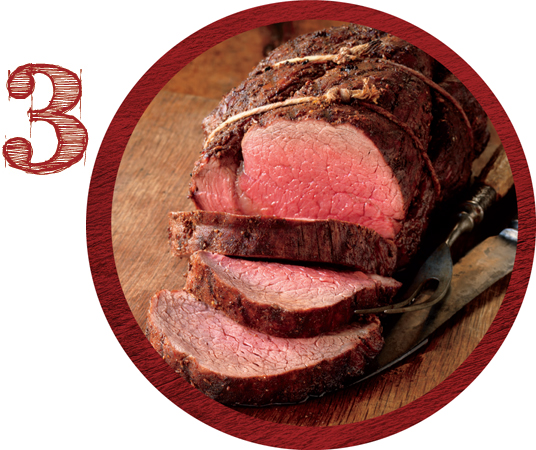
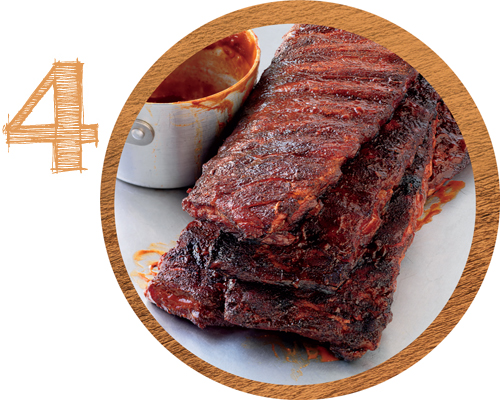

Next page
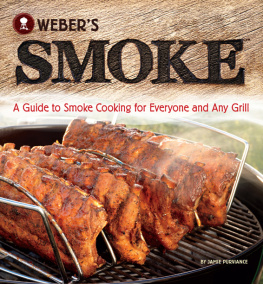


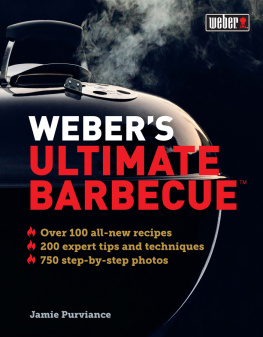
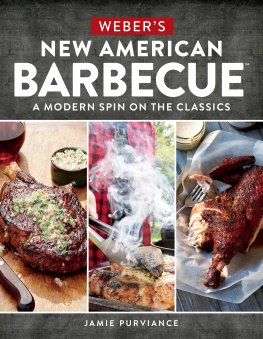


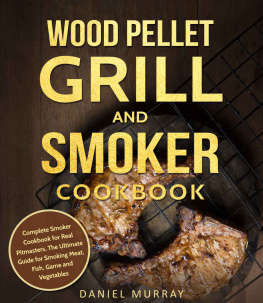
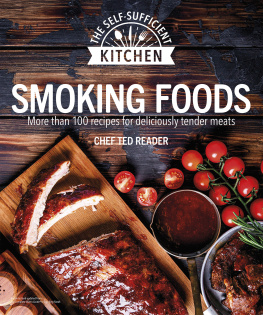
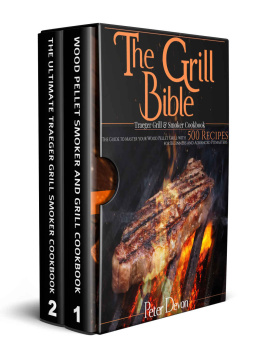
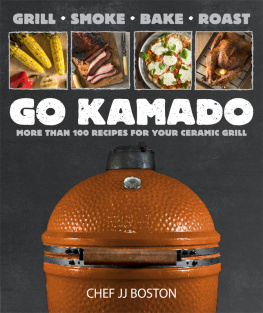

 FROM THE AUTHOR Anything smoked used to make my head swim. My confusion really started in rural Louisiana about 30 years ago, when I was a college kid on a summer road trip. One hot and humid afternoon, seductive aromas of wood-smoked pork drifted in my open car window and so, like the true carnivore I am, I followed their path to some county fairgrounds where a barbecue competition was under way. Walking among the teams of brawny cooks and their billowing barbecue rigs, including some rigs that were bigger than my car and probably twice as expensive, I wondered if I might have stumbled into a peculiar cooking cult. What exactly were these people doing with animal carcasses, foot-long meat injectors, wheelbarrows full of wood, and sauces bubbling in battered pots? Some of the barbecue teams were selling samples, so I paid a dollar for a single sparerib. What I got was a kaleidoscope of tastes that revolved around rich, moist pork deeply nuanced with the fragrance of wood, but what in the world were all those other flavors, and how did the cooks get the succulent meat to slip so easily off the bone? There was so much I didnt know.
FROM THE AUTHOR Anything smoked used to make my head swim. My confusion really started in rural Louisiana about 30 years ago, when I was a college kid on a summer road trip. One hot and humid afternoon, seductive aromas of wood-smoked pork drifted in my open car window and so, like the true carnivore I am, I followed their path to some county fairgrounds where a barbecue competition was under way. Walking among the teams of brawny cooks and their billowing barbecue rigs, including some rigs that were bigger than my car and probably twice as expensive, I wondered if I might have stumbled into a peculiar cooking cult. What exactly were these people doing with animal carcasses, foot-long meat injectors, wheelbarrows full of wood, and sauces bubbling in battered pots? Some of the barbecue teams were selling samples, so I paid a dollar for a single sparerib. What I got was a kaleidoscope of tastes that revolved around rich, moist pork deeply nuanced with the fragrance of wood, but what in the world were all those other flavors, and how did the cooks get the succulent meat to slip so easily off the bone? There was so much I didnt know. As much as I adore barbecue, I wanted to write a book about a much wider spectrum of smoked foods and I wanted to share with you many of the quickly grilled items that are improved with a little smoke.
As much as I adore barbecue, I wanted to write a book about a much wider spectrum of smoked foods and I wanted to share with you many of the quickly grilled items that are improved with a little smoke. 
 TABLE OF CONTENTS
TABLE OF CONTENTS 



